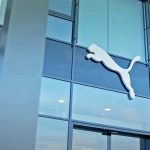Gildan Activewear, Inc. generated net sales of $840 million in the second quarter ended July 2, driven by better-than-expected sales volume in Activewear which offset weaker-than-expected product mix in the category.
The company’s operating margin came in at 21.7 percent of sales and reflected a net insurance gain of $74 million, partly offset by restructuring charges of $30 million. Excluding these items, the company’s adjusted operating margin1 of 16.5 percent was slightly above the company’s expectations.
Consequently, Gildan ended the quarter with GAAP diluted EPS of 87 cents and adjusted diluted EPS of 63 cents.
Net sales for the second quarter were said to be above the company’s expectations at $840 million but reflected a 6 percent decline over a record quarter last year.
In Activewear, Gildan generated sales of $692 million, down 9 percent compared to the same period last year which had benefited from distributor inventory replenishment, following de-stocking which occurred during the pandemic and a tight manufacturing environment in 2021. During the second quarter, the company’s year-over-year POS trend for the Activewear category was described as “positive” driven by performance in North America. International markets were more challenging than Gildan expected, with sales in the quarter down 2 percent versus the prior year with POS trends softening sequentially.
Gildan said it saw increasing momentum in the Hosiery & Underwear category in the quarter with sales totaling $149 million, up 8 percent year-over-year. This increase was said to be mainly driven by underwear sales volume growth, reflecting the expansion of the company’s private label offering and the roll-out of new programs in the mass retail channel. Further, while industry demand for men’s underwear remained down year-over-year, Gildan said it was pleased to see POS trends improve sequentially.
Gildan generated gross profit of $217 million, or 25.8 percent of sales in the second quarter, down $48 million from the prior-year quarter, primarily driven by “higher year-over-year fiber costs, as expected, as well as unfavorable product mix, which together more than offset the year-over-year benefit of higher net selling prices during the quarter.”
SG&A expenses of $78 million, or 9.3 percent of sales, were down $11 million, or 13 percent, compared to last year due to “lower variable compensation expenses and the company’s continued cost containment efforts, which more than offset the impact of cost inflation.” This represents a year-over-year improvement of 70 basis points despite the impact of sales deleverage.
Second quarter operating income was $183 million, or 21.7 percent of sales, including a net insurance gain of $74 million related to the two hurricanes which impacted the company’s operations in Central America in 2020, partly offset by restructuring charges of $30 million which included the closure of a sewing facility in Honduras. This compared to an operating income of $174 million, or 19.4 percent of sales, in the prior-year period. Excluding these items, the company’s adjusted operating income of $139 million, or 16.5 percent of sales, which came in slightly better than expected, was down $37 million, or 310 basis points, compared to the prior year, reflecting lower sales and lower adjusted gross margin, partly offset by lower SG&A expenses.
After reflecting net financial expenses of $21 million, up $13 million over the prior year due to higher interest rates and average net borrowing levels, and the positive benefit of a lower outstanding share base, Gildan reported GAAP diluted EPS and adjusted diluted EPS for the quarter of 87 cents, and 63 cents, respectively, up from 85 cents and down from 86 cents, in the prior year.
GAAP net earnings for the quarter included the after-tax impact of the net insurance gain and restructuring charges.
Outlook
Gildan said in a statement that the company’s vertically integrated model, the company’s competitive cost structure, leadership in pricing, product availability, and strength in sustainability are enabling it to grow the company’s market share in key product categories and outperform the company’s peers. Further, with strong comparative periods now behind the company, Gildan continues to expect the company’s revenues to grow in the second half of the year supported by the planned roll-out of incremental retail programs.
Still, and despite continued market share gains, Gildan said it is seeing current market conditions unfavorably impact the activewear product mix, both in North American and International markets, as customers focus on lower-priced products. Combined with near-term uncertainty related to the macro-environment, Gildan believes it is prudent to temper the company’s previous FY 2023 expectations for revenue growth and operating margins.
Full Year 2023 Updated Outlook
- Revenues for the full year to be flat to down low-single-digits, compared to the company’s previous expectations of a low-single-digit year-over-year increase;
- Full-year adjusted operating margin slightly below the low end of the company’s current 18 percent to 20 percent annual target range;
- Adjusted diluted EPS in the range of $2.55 to $2.65, including the impact of assumed share repurchases of 5 percent of the outstanding public float in 2023. The company’s previous guidance called for EPS to be in line with record FY 2022 adjusted diluted EPS of $3.11;
- CAPEX maintained at the lower end of the company’s 6 percent to 8 percent target range; and
- Strong full-year free cash flow generation above $425 million.
The above outlook assumes no meaningful deterioration from current market conditions including the pricing and inflationary environment, and reflects the assumptions noted above. Further, it reflects the company’s expectations as of August 3, 2023, and is subject to significant risks and business uncertainties, including those factors described under “Forward-Looking Statements” in this press release and in the company’s annual MD&A for the year ended January 1, 2023. The Board could modify, extend or terminate current or future share repurchase programs at any time.
Photo courtesy Gildan















